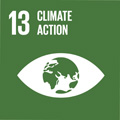- Docente: Donata Luiselli
- Credits: 6
- SSD: BIO/08
- Language: Italian
- Teaching Mode: Traditional lectures
- Campus: Bologna
- Corso: Second cycle degree programme (LM) in Biodiversity and Evolution (cod. 5824)
-
from Mar 11, 2025 to Jun 03, 2025
Learning outcomes
At the end of the course the student has basic and applicative technical-scientific skills concerning the use of paleogenomic analysis for the study and enhancement of biological materials from archaeological and paleontological contexts. In particular the course is based on the analysis of DNA extracted from human, animal and plant remains aimed at their characterization and genetic identification and related scientific subjects. The student knows limits and potential of ancient DNA analysis, is able to select and evaluate the samples suitable for paleogenomic analysis, knows the wet lab analysis processes and the main tools and pipelines for bioinformatics analysis of NGS sequencing data.
Course contents
- Ancient DNA: definition, history, potential, and limitations. The main challenges: post-mortem damage and contamination from exogenous DNA. Environmental conditions that favor DNA preservation, temporal limits of conservation. Authentication criteria and guidelines. Ethical implications. Setting up a laboratory for ancient DNA analysis.
- Types of samples for ancient DNA analysis. Sampling. DNA extraction. Creation of genomic libraries. NGS sequencing and comparison with classical methodologies. Shotgun sequencing and enrichment methods.
- Computational processing of high-throughput ancient DNA sequencing data. Understanding NGS data. Overview of paleogenomic analysis pipelines (e.g., Paleomix and Eager). Alignment to a reference genome. Quality and quantity controls. Authentication and assessment of contamination in NGS data from ancient remains. Estimation of endogenous DNA content. Variant calling. Methods for sex determination. Methods for calculating kinship relationships.
- Case studies: the contribution to the reconstruction of human phylogeny and evolutionary history, as well as migration and dispersal dynamics of human populations; reconstruction of the origins and epidemiological history of infectious diseases, identification of pathogens and the study of their evolution and spread; reconstruction of domestication processes; reconstruction and selection of ancient phenotypes; environmental DNA.
The concluding part of the course (1 ECTS) will be dedicated to practical exercises on the use of software/pipelines for the processing of paleogenomic data.
Readings/Bibliography
Brown T., Brown K.- Biomolecular archaeology. An introduction. Wiley-Blackwell, 2011.
- Richards M.P., Britton K. - Archaeological Science. An introduction. Cambridge University Press 2020.
- Caramelli D. - Antropologia molecolare: manuale di base. Firenze University Press, 2009.
- Ancient DNA, Methods and Protocols. Springer Protocols. Editors: Shapiro, B., Barlow, A., Heintzman, P.D., Hofreiter, M., Paijmans, J.L.A., Soares, A.E.R. (Eds.)
Teaching methods
The presentations shown during the lectures, as well as scientific articles and reviews that may be useful for further exploring some of the topics covered in the course, will be shared with students through specific applications (e.g., Virtuale). On Virtuale, a list of the pages from various texts to be studied for the program will also be uploaded.
5 ECTS will be delivered through lectures.
1 ECTS will be delivered through computer exercises related to the main paleogenomic data analysis methodologies presented during the course.
Assessment methods
The grade will be determined through a one-hour written exam consisting of a combination of multiple-choice and open-ended questions.
Teaching tools
The presentations shown during the lectures and supplementary articles will be shared with students through specific applications (e.g., Virtuale).
Office hours
See the website of Donata Luiselli
SDGs



This teaching activity contributes to the achievement of the Sustainable Development Goals of the UN 2030 Agenda.
